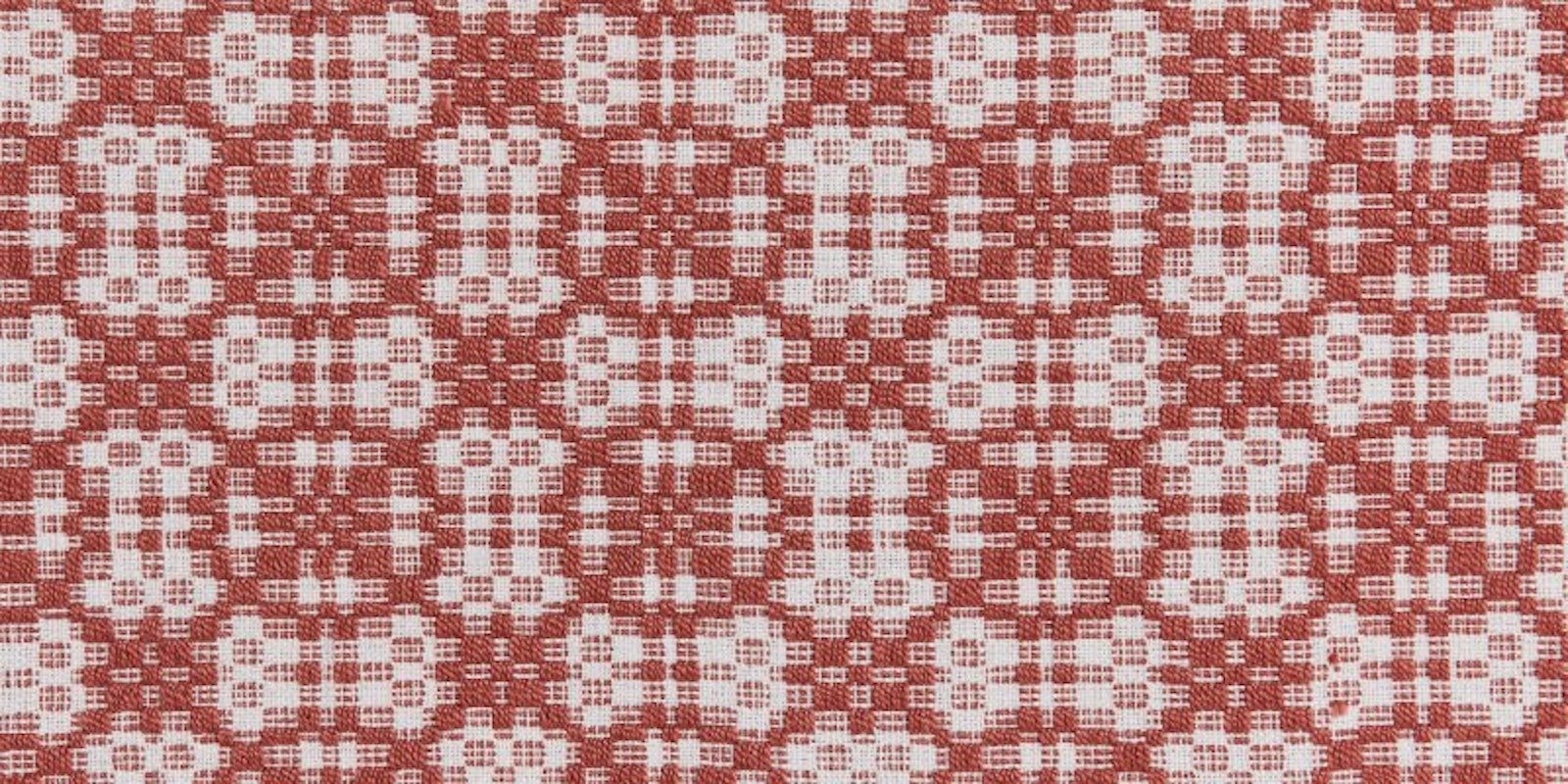
I started weaving (first on a Dorothy table loom) because I wanted to weave early-American-style coverlets. At the time, I marveled that real people actually wove those coverlets on their own looms at home. To think that I might do that, too, seemed too good to be true. Of course, what I really wanted to weave was jacquard-style coverlets in doubleweave. My dream was to show a center motif of our farmhouse surrounded by minor motifs of our sheep, chickens, cows, pigs, two dogs, and one horse. It didn’t take long to downsize my notion to overshot.
I wove my first Whig Rose coverlet in three panels since my first loom was 36" wide. Matching three panels was a daunting task (that I did not accomplish with my first effort, long story), so my second loom was 50" wide. In addition to its width, after two overshot coverlets, it had a drawloom attachment that would enable me to weave coverlets in block doubleweave. No farm animals, alas, but I could weave typical coverlet designs with roses, pine trees, and snowballs. My coverlet-weaving business was born.

I’m not sure how I thought of the investment of time in those coverlets. I loved weaving them. If you loved to ski, would you think you should make money doing it? After a few of them, though, I couldn’t help but realize that from start to finish, coverlets take a very long time. The one that took me the longest probably had close to a thousand hours in it. For that coverlet, I used pick-up to weave corner logos the way professional jacquard coverlet weavers did. My goal was to sell these coverlets, so I had to determine a price for them. At just about this time, in the mid 1980s, Cost Plus was selling doubleweave throws in Jacquard coverlet patterns. Their cost? Under $50. Trying to figure out how much to charge for my coverlets was only the first time I wrestled with the issue of what determines the value of a handwoven item.
Value does not really seem to be related to the number of hours it takes to create something, especially with something handwoven. For an hourly wage, weaving coverlets was clearly a losing proposition. Over the years, I also discovered that as much weaving pleasure can come from weaving something small as from weaving something large. The advantages to weaving small items are almost too many to count: your loom can be small; it can even be a portable table loom. You use a lot less yarn. Warping is much faster. You feel the joy of completion sooner and much more often. A small item is appreciated as much as a large one.
For your next project, start with something small, like overshot pot holders (instead of coverlets!) like those designed by Jean Korus in the May/June 2005 issue of Handwoven.

